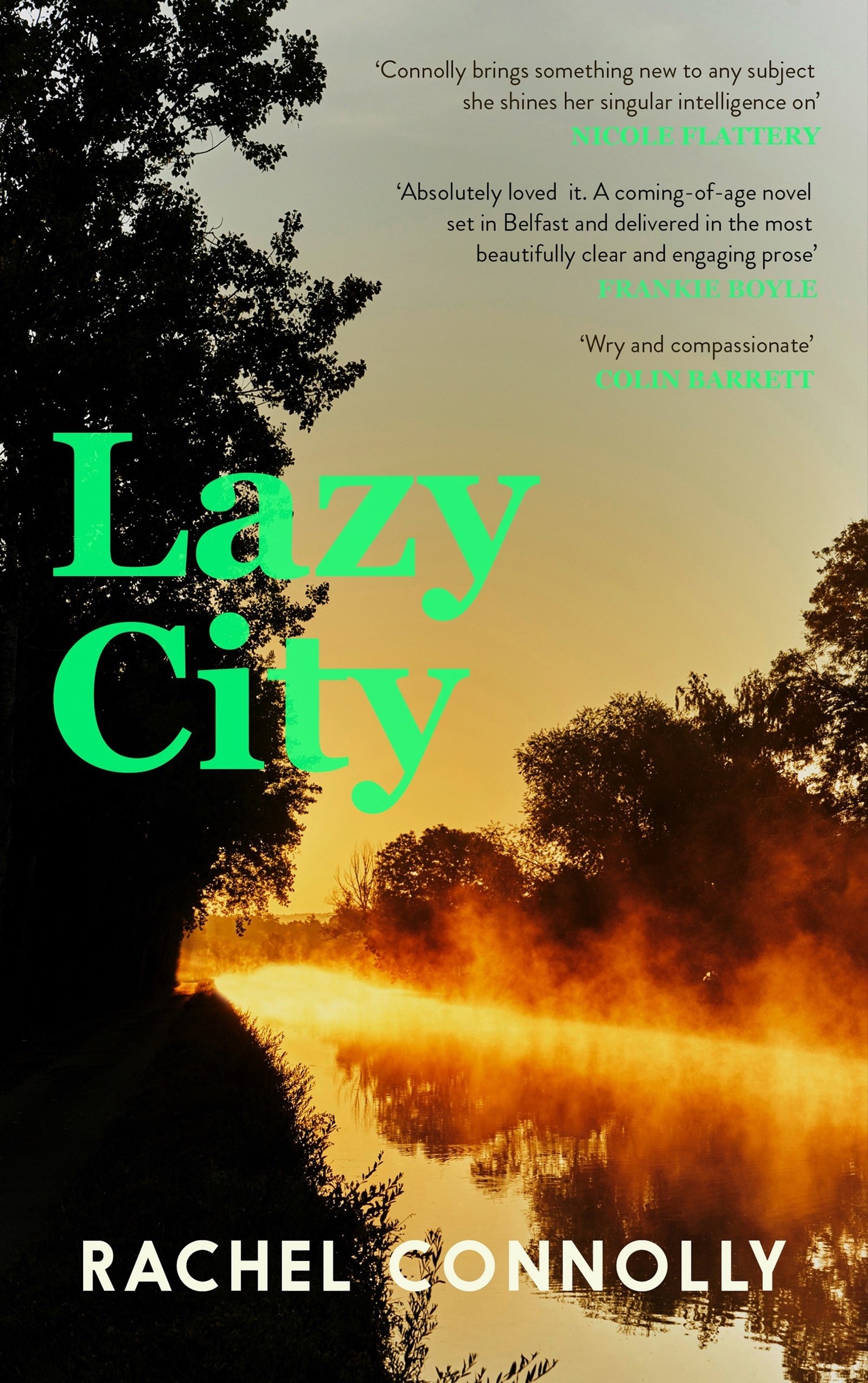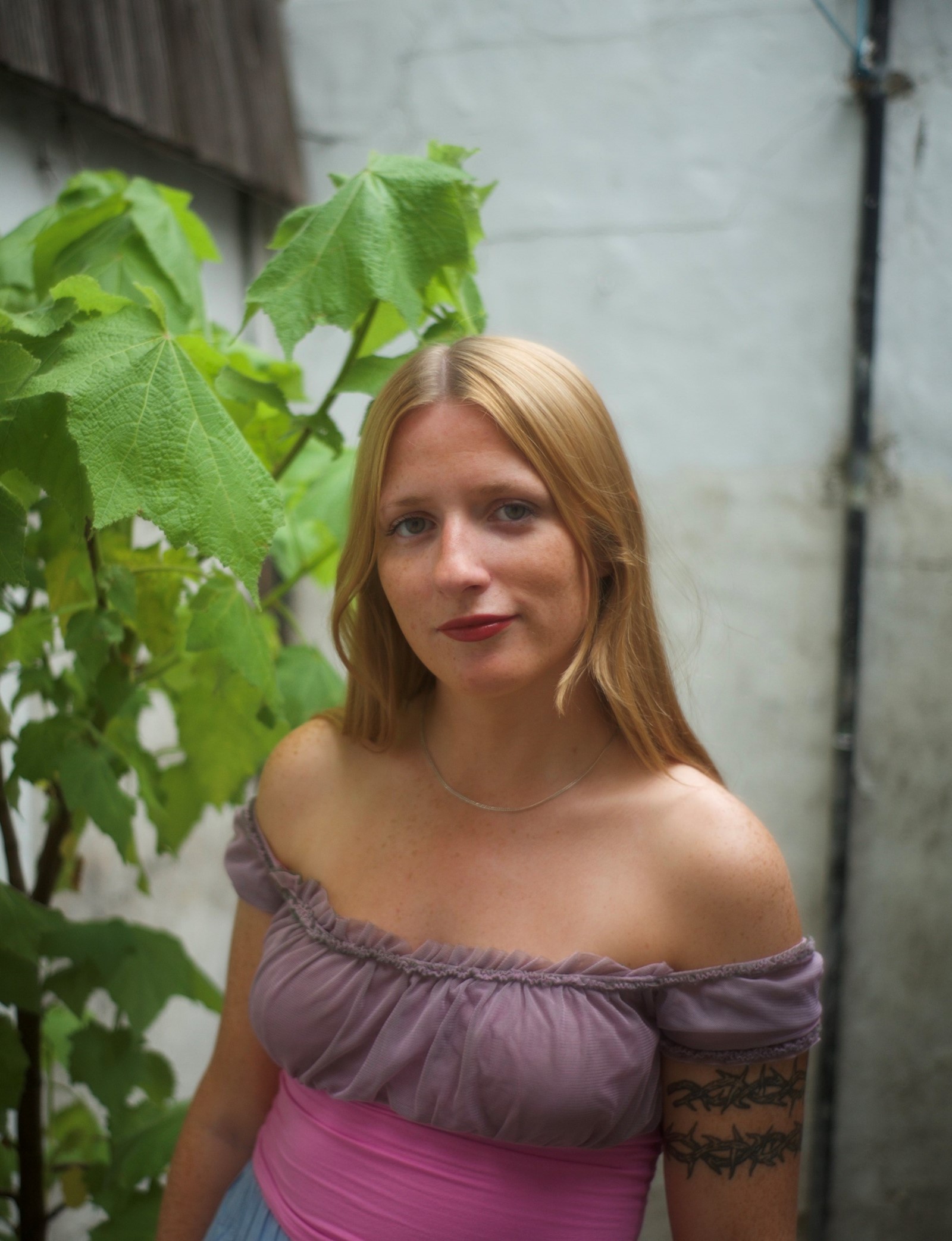In the opening scene of Lazy City, the protagonist Erin is up at sunrise, on a run down Belfast’s Lagan river. She bumps into a woman – perhaps a former friend, lover or roommate – who seems to have followed Erin there. They break into maddeningly circular, petty bickering which shows no hope of reparations. “Does everyone have these relationships they sort of live in the wreckage of?” thinks Erin. The woman, it turns out, is her mother.
The debut novel from Rachel Connolly, a London-based writer from Belfast, Lazy City stages Erin’s return to her hometown after the sudden death of her best friend. As a live-in au pair, both her home and work are a temporary arrangement as she ambivalently decides how to move forward: “This feeling of trying to plan around many variables, and the ways I might possibly feel, is like plotting a course along a shifting surface.” In her social life, Erin struggles to feel connected, sensing others at a slight remove, whether it’s her ex-boyfriend Mikey or her old friend Declan. At Madame George, the bar where Declan works, she meets an attractive American called Matt and they start an unlikely relationship. “The loneliness in him means something to the loneliness in me,” thinks Erin.
As much as it stages an actual grief, Lazy City explores less immediate forms of mourning. With the looming threat of climate destruction, automated job rejections and depressing new-build flats, this is a Belfast delicately poised between past, present and future, symbolised in granular descriptions of its marbled skies. Far from idle, Connolly captures Erin’s world with her signature precision that never quite allows a word or idea to rest.
On a sunny afternoon in central London, AnOther spoke to Rachel Connolly about her literary influences, creating sympathetic characters and the Catholic church.

Kitty Grady: As someone who now lives in London, why did you want to go back to Belfast for the novel?
Rachel Connolly: It’s an odd question, because Belfast is a place where a lot of young people have to leave for work or university. I’ve lived in London for five or six years, and I lived in Belfast longer than I’ve lived anywhere else. Louise Kennedy, who wrote Trespasses, left Belfast when she was eight or nine and set her novels during the Troubles – so closer to what people expect of books from Belfast – I don’t know if she’d be asked the same. It’s a place people do leave and that’s really inherent to the relationship people have with it. But it’s somewhere with a distinctive politics, history and geography so it’s not surprising to me that people who move away end up setting stuff there.
KG: Beyond the central theme of grief, you also create space for lighter themes – partying and gossip, for example. Why was it important to have this balance?
RC: I don’t think I could write a book that wasn’t funny in places. I know it’s the trend at the minute for books to be really dire, with a very mute or numb narrator who seems to have a joyless life. But that’s not what I like. Humour and fun are such an important part of life. Sometimes you read a book that’s very serious and grave and you meet the writer and that’s not what they’re like at all. I wonder if maybe they’ve written in this way out of a perception that it’s a writerly way to write.
KG: You have a very analytical writing style, present in your non-fiction work too, with all these logical exercises where Erin weighs up the motives and actions of other people. I’d be interested to hear more about your literary influences.
RC: The influence question is hard because you know which writers you like, but you don’t always know which ones are an influence. Often it’s something you notice in hindsight. I did Maths at university, so I didn’t read the canon in that way. I’ve read some Victorian literature, but not a lot. I read a lot of translated work. At the time of writing, I was reading a lot of a writer called Yūko Tsushima who wrote Territory of Light and recently, I’ve been re-reading Yasunari Kawabata. Weighing up motivations and characterising via dialogue is something they both do, too.
When you get compared to other writers it tends to be based on demographic; other Irish women, for example. A friend read the book and was like, ‘Oh, it’s just like Jean Rhys,’ and I’ve never read her. I will, but it’s interesting as women almost never get compared to male writers. You don’t get compared to people who write in a different language. Subject matter and themes take on more weight than style.
“I know it’s the trend at the minute for books to be really dire … But that’s not what I like. Humour and fun are such an important part of life” – Rachel Connolly
KG: Erin is characterised as quite spiky as well as unemotional. Were you interested in creating a female heroine who is less ‘typical’?
RC: Women are policed in all manner of ways, including in how we communicate. I knew if I added in a big breakdown scene Erin would be more of a sympathetic character to a lot of people. She’s quite vulnerable in a lot of ways but she doesn’t perform it. Because who would she do it to? She isn’t someone with a good support network. What I have noticed is that people who perform vulnerability are usually the most supported people, who have people around that are receptive to it. If you don’t, you just have to live it out. I really wanted to do that for a female character.
KG: There are several doubles of male characters in the book. Two sets of brothers, two Matts. Why did you want to emphasise masculinity in this way?
RC: I wanted two Matts because I thought that was funny. And to point out how, in a way, Erin’s relationship with Matt is far more intimate than her relationship with the American Matt, even though they’re sleeping with one another. With [Irish] Matt, he’s quite privileged, and that was a character I was interested in making sympathetic. He’s one of the only characters who looks after others, for example. For a while, we’ve had this reductive pop feminist discourse of ‘men are trash’ and I’m interested in men who don’t have as much power as we like to think. Matt is a character who doesn’t find life easy and it’s nobody’s fault. I was interested in what to do with a character like that.
KG: You have all these sequences where Erin goes into churches to think. I love how you describe Erin’s ambivalent relationship with Catholicism, its ‘cheap luxuriousness.’ It reflects the way a lot of people who grew up with a religion feel.
RC: I think it’s about Erin’s relationship with herself, because she doesn’t have anywhere else she can go and reflect on things. Her relationship with religion is something that started young, and I see her as having quite a dysfunctional childhood, so I see it as a safe space for her. Like an imaginary friend almost, a space she can retreat to, which makes sense if she has gone through something traumatic in adulthood. I don’t think she fully understands her relationship with it, but that’s the nature of religion. If you come to it as a child it is almost subconscious, and you can’t ever have total control over that.
“Women almost never get compared to male writers. You don’t get compared to people who write in a different language. Subject matter and themes take on more weight than style” – Rachel Connolly
KG: With the church, which offers Erin a place of safety, you also emphasise the way that Erin doesn’t really have a proper home and the context of the current housing crisis.
RC: I personally don’t love books where characters are complaining about renting a mouldy flat in zone three, because everybody has to do it. But, I think something about Erin is how at the minute – and this isn’t class-based at all – people rely on their family a lot and Erin is not someone who can do that. She can’t mess things up and sleep somewhere for six months. It’s not even something we treat as a form of privilege because it’s so widespread.
KG: Were you worried about people making autobiographical leaps between you and Erin?
RC: I was talking to the writer Michael Magee about this because his novel Close to Home is explicitly autobiographical but he never gets asked about that. It’s a question that, for a man, seems invasive. Whereas for a woman it’s this sort of peeking, wanting to see more under the covers. I have been asked this question and thought: would I not have made it more flattering?! I like Erin, but I don’t think she comes off so well in a lot of ways. If it were based on me, surely I’d have made it a hero’s journey where I get the boy in the end?
Lazy City by Rachel Connolly is published by Canongate and is out on August 24.
